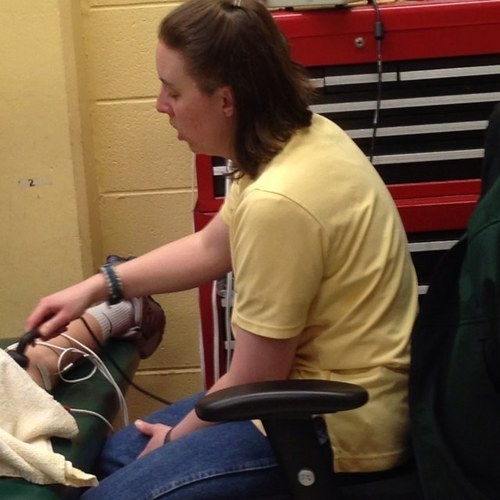
KRTV.com | Great Falls, Montana
Every time student athletes step onto the field, the court, the course, the mat or jump into the pool, they lay their hearts on the line.
But play too hard and hearts aren’t the only things on the line.
“A concussion is when the brain sloshes against the skull and there is some neurological issues that happen in the brain when they get hit,” explains athletic trainer Teayre Klosterman. She oversees the athletes at C.M. Russell High School in Great Falls.
She’s been there seven years and says concussion numbers have climbed: “We are seeing an increase, but we’re seeing an increase only because of the fact we’re looking for them now. We used to call them ‘Oh, you got your bell rung.’ Well getting your bell rung was getting a concussion.”
The Centers for Disease Control and Prevention describes concussions as traumatic brain injuries.
They can be caused by a blow to the head. Even a hit to the body can cause the head to move quickly enough, the brain ricochets or twists, leading to a chemical change in the brain.
Signs and symptoms include appearing dazed, memory problems, headaches, losing consciousness and even personality changes.
Klosterman says concussions are different for each student and different each concussion.
High school sports concussions are most common include football and girls soccer, though school officials say they can result from just about any sport.
According to school officials, between August 5, 2015 and January 25, 2016, a total of 20 girls and 56 boys have gone through concussion protocols.
In March, Great Falls School Trustees passed the district’s first concussion policy: Policy 3415. School officials say installing the new rule was easy because the district already had protocols in place for years.
Here’s the process: Klosterman says if they suspect an athlete has a concussion, they pull them out of play and perform a sideline procedure. There she checks their eyes’ dilation, their body control and their memory.
Occasionally she’s tipped off by team members if something seems strange.
“I had a young man who played football here at CMR for four years. His senior year he sustained a concussion and couldn’t remember what a specific play was. And his teammates were like ‘Uh he is not acting right.'”
Next they take the ImPACT test, a computerized neurological test checking speed, reaction and memory.
Student athletes take the test before the school year to create a baseline. When a student retakes the test, they have to be comparable to their baseline to pass and move forward. All the results have to be okayed by a doctor.
From there it’s a step by step progression of light exercise to partial practice participation to full participation. Students must also not show any symptoms each day to progress.
Klosterman says recovery usually takes 5 to 7 days.
But school officials are finding some drawbacks with the ImPACT test.
GFPS athletic director Gary DeGooyer says, “Supposedly some of these kids can remember these things or memorize the test, so even with a concussion they might be able to pass it.”
Klosterman says the test will need to adjust to improve, especially since kids take the test more and more at a younger age.
But she says ImPACT has done a great job changing the program.
Klosterman calls seeing a student return to play after a concussion satisfying.
“You know you’ve stepped them through and you know you’ve stepped them through correctly and that’s probably the biggest thing. Knowing that you’ve done what you’re supposed to do.”
And the students can get back to playing the game.
For a link to the policy: http://www.gfps.k12.mt.us/content/3000-series-students#3415
For a link to the CDC’s HEADS UP program: http://www.cdc.gov/HeadsUp/